Selling Size: Single Plant | 4″ Pot Included
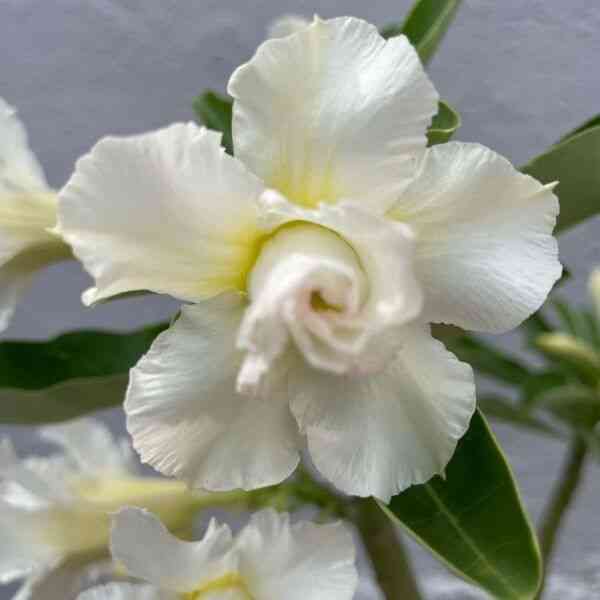
Adenium plants, also known as Desert Roses, are popular for their unique swollen trunks (caudex) and beautiful, vibrant flowers. Here’s a detailed guide to their care:
Light:
- Adeniums thrive in full sunlight, needing at least 6-8 hours of direct sun daily, especially during their active growth period (typically March to November in India).
- Insufficient light can lead to leggy growth and reduced flowering.
- In extremely hot climates, some afternoon shade can prevent leaf scorch, especially for young plants. Gradually acclimate plants to full sun to avoid burns.
- Indoors, place them near a south or west-facing window where they receive the strongest light. If natural light is insufficient, consider using grow lights.
Watering:
- Allow the soil to dry out completely between waterings. Adeniums are succulents and store water in their caudex and roots, making them drought-tolerant.
- Water thoroughly when you do water, ensuring the entire root ball is saturated and excess water drains out from the bottom of the pot.
- Watering frequency will vary depending on the temperature, light intensity, and humidity. During the warm growing season, you may need to water more frequently (e.g., every 7-10 days or even 2-3 times a week in very bright, hot conditions).
- Reduce watering significantly during the winter months (October to March in India), when the plant enters a dormant or semi-dormant phase. Water sparingly, perhaps once a month, especially for mature plants. Overwatering during dormancy is a primary cause of root rot.
- Avoid overwatering, as this is the most common cause of problems, especially root rot, which can be fatal. Ensure your pot has good drainage.
- Water sparingly during slow growth periods and increase watering when new growth is visible in the spring.
- Do not water in the evenings, especially during cooler periods, as this can keep the leaves and soil moist for too long, increasing the risk of fungal diseases.
Soil:
- Adeniums need well-draining soil to prevent waterlogging and root rot.
- A cactus or succulent potting mix is ideal.
- You can also create your own mix using a combination of regular potting soil with perlite, pumice, or coarse sand to improve drainage. A mix of coarse river sand and manure in equal proportion is also recommended.
- Terra cotta pots are often preferred over plastic pots as they allow for better air circulation and help the soil dry out faster. Ensure the pot has drainage holes.
Temperature and Humidity:
- Adeniums thrive in warm temperatures between 23°C and 35°C (75°F and 95°F). They can tolerate high temperatures.
- They are not frost-tolerant and should be protected from temperatures below 10°C (50°F). Extended exposure to temperatures below 4°C (40°F) can be fatal.
- During cooler spells, especially in late fall and winter, keep the soil on the drier side.
- Adeniums prefer low humidity, typical of their native arid environments. Good air circulation is important to prevent fungal diseases, especially in humid conditions.
Fertilizer:
- Feed your Adenium during the active growing season (spring and summer) to encourage healthy growth and flowering.
- Use a balanced liquid fertilizer (containing nitrogen, phosphorus, and potassium) diluted to half the recommended strength, once every 2-4 weeks.
- A fertilizer with elevated phosphorus can help promote flower formation.
- You can also use a slow-release pelletized fertilizer at the beginning of the growing season, following the manufacturer’s instructions.
- Stop fertilizing in late August or early September as the plant prepares for its dormant period. Fertilizing during dormancy can disrupt its natural cycle and make it more susceptible to cold damage.
- Be cautious with fertilizer, as Adeniums are sensitive to elevated salt levels in the soil. Periodically leach the soil by watering thoroughly until water drains from the bottom to remove accumulated salts.
Dormancy (Winter Care in India: October – March):
- As temperatures cool, Adeniums may enter a period of dormancy, characterized by leaf drop. This is a natural part of their cycle.
- During dormancy, withhold water almost entirely. Water very sparingly only if the caudex starts to shrivel significantly.
- Keep the plant in a protected location away from frost. Minimal light is needed during dormancy, and plants can even be stored in a dark garage or shed as long as they are kept dry and above freezing temperatures.
- Resume regular watering and fertilizing in the spring when temperatures warm up and new growth appears.
Pruning:
- Pruning can help to shape the plant, encourage branching, and remove dead or leggy growth.
- The best time to prune is usually in late winter or early spring, before the start of the active growing season.
- Be aware that the sap of Adeniums is poisonous and can cause skin irritation. Wear gloves when handling and pruning the plant.
Repotting:
- Repot your Adenium every 2-3 years, or when it outgrows its current container.
- The best time to repot is in the spring, as the plant is starting its active growth.
- Choose a pot that is only slightly larger than the previous one, as overly large pots can retain too much moisture.
- Ensure the new pot has good drainage.
Pests and Problems:
- Overwatering is the most common problem, leading to root rot and fungal diseases.
- Pests like mites and aphids can sometimes affect Adeniums. Inspect your plant regularly and treat any infestations promptly with appropriate insecticidal soap or neem oil.
Flowering:
- Adeniums typically bloom during the spring and summer months, producing vibrant, trumpet-shaped flowers in shades of pink, red, white, and bi-colors.
- To encourage flowering, ensure the plant receives plenty of sunlight, warmth, and appropriate fertilization during the growing season.
- Newly repotted plants may focus on root development rather than flowering in the first season.
Toxicity:
- All parts of the Adenium plant, especially the sap, are toxic if ingested and can cause skin irritation. Keep plants away from children and pets and wear gloves when handling.
By following these care guidelines, you can enjoy the beauty of your Adenium plant for many years.
Only logged in customers who have purchased this product may leave a review.

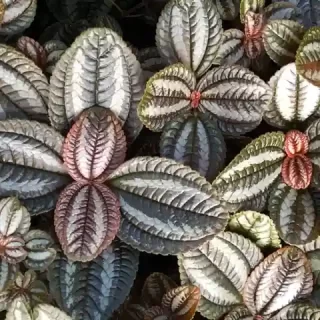

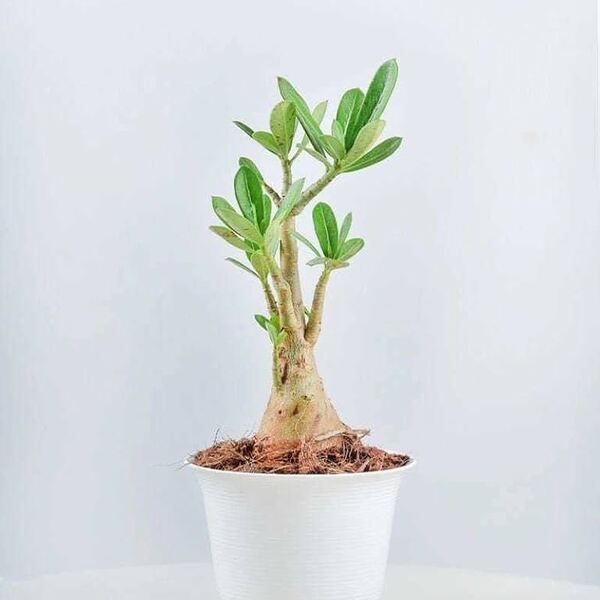
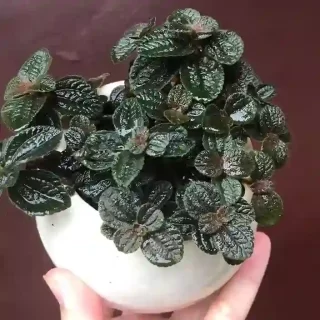


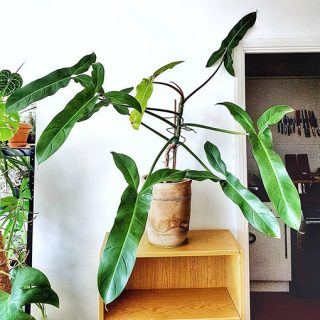
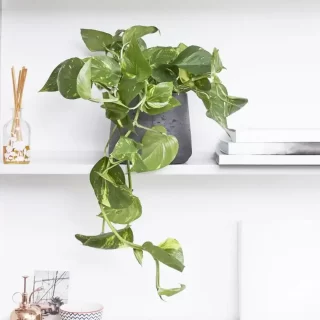


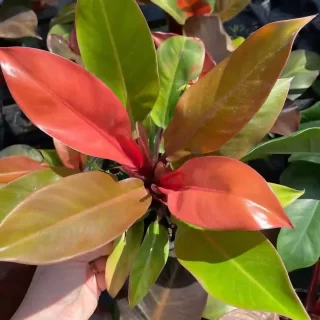
 If you need any assistance, I'm always here. Have you found what you were looking for?
If you need any assistance, I'm always here. Have you found what you were looking for?
Reviews
There are no reviews yet.